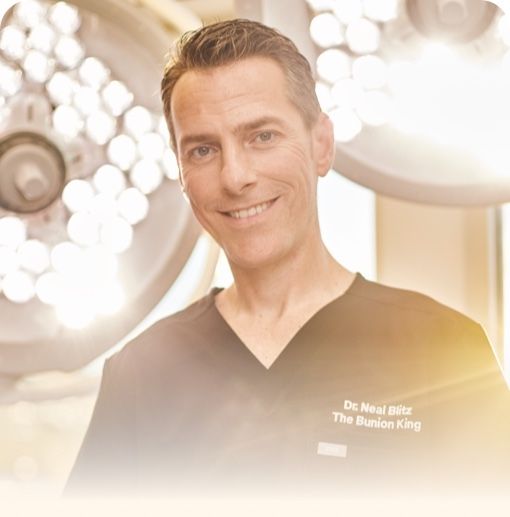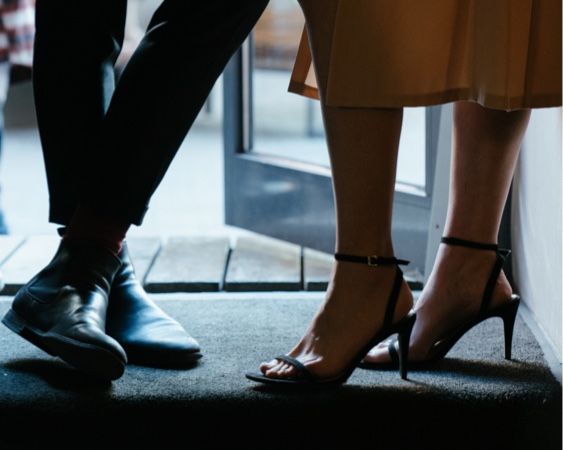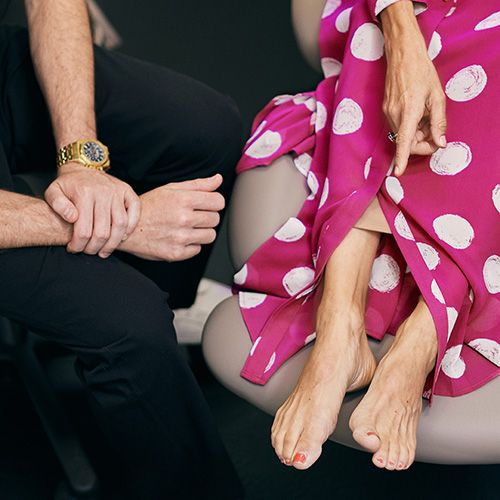
What Makes Us Different
Bunion surgery designed with your lifestyle in mind.
The Bunionplasty® procedure is the revolutionary, minimally invasive bunion surgery (MIBS) that focuses on aesthetic results and gets you back on your feet fast. How fast? You can walk the same day as your procedure – even if you’ve had both feet fixed at once. Of course, only your doctor can make these decisions with you. Learn more about how it works, then get started today.
How is it possible?
The Bunionplasty® 360 Bunion Repair™ procedure relies on two important pillars: technology and technique.
Specialized bone screws have been developed for minimally invasive bone surgery. Notice that we didn’t say “screws and plates.” Complex hardware often isn’t necessary in next-generation bunion surgery. Your doctor can choose to perform the Bunionplasty® 360 Bunion Repair™ procedure using just a single screw, depending on your specific case.
But the technology is as successful as it is because of our patent-pending methods, which require hands-on surgical training and education. So make sure to choose a provider who’s specially trained in the Bunionplasty® procedure.
No Casts No Crutches®
This is what a walking recovery can look like:
1Day 1
Immediate walking in a small surgical sandal, even when both feet are repaired at once.
2Week 6
Return to walking comfortably in sneakers for longer periods.
3Month 2 & beyond
Back to full recreation and wearing high heels if desired.
At your doctor’s discretion. Recovery timelines and results are specific to each patient. Please see Patient Risk for more information.

Compare your options
What makes the Bunionplasty® procedure better for you?
Bunionplasty® 360 Bunion Repair™ is different from the dimension-focused bunion surgery companies you may have found in your research, or even learned about from a doctor. Instead, it’s a next-generation procedure that uses the most advanced technology available, and published techniques that have been developed over nearly two decades.
Lapidus Surgery
Time-tested, established solution in all dimensions
Minimally invasive with tiny incisions
Requires joint fusion(s) of the arch
Preserves normal joint function, avoiding fusion
Promotes healing via bone regeneration
Same-day walking recovery in a surgical sandal*
No Casts No Crutches® (and no boot, either!)*
Repair both feet at once*
Patent-pending surgical technique
*At your doctor’s discretion. Please see Patient Risk for more information. Published in Foot and Ankle Quarterly, Vol. 31, No. 4, Winter 2020.
“I am 8 weeks post-op and really pleased with the results. I was able to walk out of the surgical facility right after the surgery and had minimal pain. I had a terrific experience!”
Chana S.•Bunionplasty® Procedure Patient
Bunions: Symptoms, causes, and treatment.
A bunion, or hallux valgus, is more than just a bony bump. It’s a medical deformity that occurs when the big toe joint rotates out of alignment. The big toe begins to “lean” toward the other toes, causing a bump at the base. Bunions can range from mild to moderate to severe, and even small bunions can cause pain and mobility problems. They can make it hard to wear your favorite shoes or participate in work, fitness, and social activities. Bunions are a multidimensional medical problem that gets worse over time, impacting every area of life.
Bunions are primarily a genetic problem, but some things can make them worse. Wearing high heels or shoes that don’t fit correctly can make an existing bunion worse by putting additional pressure on the big toe joint, contributing to inflammation, pain, and reduced mobility as the bunion progresses. Other medical issues can also make bunions worse, especially if they cause abnormal foot mechanics and uneven distribution of weight across the joints of the foot.
A bony bump at the base of the big toe is the first and most common sign of a bunion. The big toe may also lean toward the other toes. Symptoms can include pain, swelling, redness, and joint stiffness in the joint, and certain footwear and activities can make these symptoms worse. As the bunion grows more severe, the skin can become irritated, leading to blisters or calluses.
Your doctor will typically begin with a visual and/or physical examination, to evaluate the shape of your foot and the alignment of your big toe. They’ll ask about symptoms like pain and difficulty wearing shoes, and ask you to describe the impact your symptoms are having on your life. They may also take x-rays to confirm the diagnosis, and assess your bunion’s severity by evaluating the angle of the big toe misalignment. They may also rule out or address other conditions, like osteoarthritis.
Because bunions are a genetic condition, they can’t be prevented – but you can take steps to reduce your risk of developing them, or slow their progression if you do. Wearing properly fitted, comfortable shoes with a wide toe box helps reduce pressure. Your doctor may recommend specific exercises that can stretch and strengthen the muscles around your toes. Avoiding high heels or narrow shoes may also help prevent bunions from forming or worsening, and maintaining a healthy weight range for your body can reduce additional stress on your feet.
Your doctor may recommend bunion surgery if non-surgical treatments fail to relieve pain and other symptoms, or if the bunion significantly interferes with your daily activities. They may also suggest surgery if your bunion deformity gets worse over time, you’re having difficulty walking, your toes are severely misaligned, or you have other related symptoms that don’t improve with non-surgical measures.

Backed by the Bunion King®
Developed for people, not products.
The Bunionplasty® procedure was pioneered by internationally renowned foot surgeon Neal M. Blitz, DPM, FACFAS, who was later named the Bunion King® by MDNews. Dr. Blitz has been at the forefront of evolving bunion repair surgery from open-incision Lapidus procedures to the minimally invasive, all-dimension bunion correction surgical options now available to patients.
Today, Dr. Blitz is focused on making the Bunionplasty® 360 Bunion Repair™ procedure more widely available. He’s turned his attention to training other doctors to perform it to his standards, so more people can get the true benefits of minimally invasive bunion surgery (MIBS).

Find a doctor and take the next step.
Life is too short to suffer from bunion pain. Find a doctor today, get your bunion surgery questions answered, and get back on your feet again.


